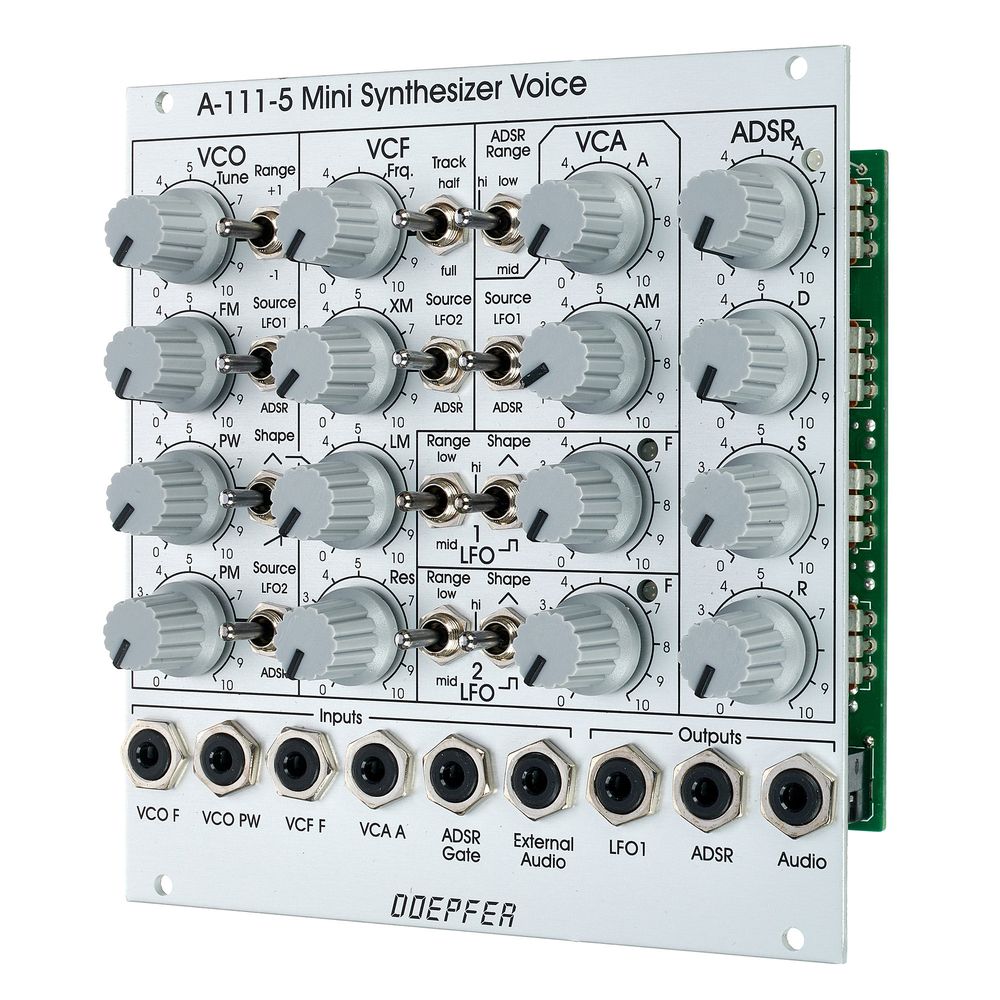2. What's a Eurorack?
"Eurorack" refers to a standardized format for building modules for modular synthesizers that are compatible with each other. The Eurorack format was introduced in 1996 by Doepfer Musikelektronik from Germany and has gradually been adopted by other manufacturers in the following years. Nowadays, there are several hundred companies with module series and their own product philosophies.

Dieter Doepfer
Eurorack-Specs
Nevertheless, these modules all have something in common: they consist of electronic circuit boards mounted behind front panels with buttons and faders. Most Eurorack modules are 3 rack units (3U) high for uniform mounting, while a few exceptions measure 1U. Additionally, each of them requires a voltage of +/-12 volt direct current supply.
In terms of width, individual modules and entire racks are measured in so-called "units" (U), with 1U being just under five millimeters.
To form a modular synthesizer together, Eurorack modules are screwed into cases with mounting rails. The cases usually have an integrated power supply to operate them. Alternatively, there are also power supplies that take on this task, externally.

The Doepfer A-111-5 Synthesizer Voice is a typical Eurorack module with knobs, toggle switches, and patch points.
To create sounds with a Eurorack synthesizer, the modules themselves need to be wired. Both audio signals and control voltage (CV) flow through the cables with 3.5mm monojacks. Audio signals are controlled and altered by CV signals. CV voltage can be continuous, such as in the form of an LFO, or switched on and off, which is then referred to as trigger or gate, and is used for rhythmic actions. But whether it's audio, CV, or gate/trigger: all signals can interact with each other and collectively produce unique sounds.
![Ein vollständig zusammengestelltes modulares Eurorack-System in einem Koffer-Gehäuse mit Stromversorgung.] Ein vollständig zusammengestelltes modulares Eurorack-System in einem Koffer-Gehäuse mit Stromversorgung.]](https://thumbs.static-thomann.de/thumb//thumb1000x/pics/cms/image/guide/en/eurorack_modulare_synthesizer/02_461935.jpg)
A fully assembled modular Eurorack system in a suitcase-style enclosure with power supply.
The musician has complete control over the path to the final sound. This is where the magic and the challenge of modular synthesis come into play. Since modules can be connected or "patched" in various ways, Eurorack systems have the potential to produce an infinite variety of sounds.
Eurorack Experimentation: A Journey
Nonetheless, modular systems are also incredibly transient. Once the cables are removed and the system is unpatched, it's unlikely that the modular system will recreate the exact same sound. This is because the modules are always slightly adjusted, leading to varied interactions within the system. Modular synthesis is inherently experimental: every new patch is an adventure, each step a unique experiment. Moreover, the selection of modules can lead to entirely different types of experiments.




![Ein vollständig zusammengestelltes modulares Eurorack-System in einem Koffer-Gehäuse mit Stromversorgung.] Ein vollständig zusammengestelltes modulares Eurorack-System in einem Koffer-Gehäuse mit Stromversorgung.]](https://thumbs.static-thomann.de/thumb//thumb1000x/pics/cms/image/guide/en/eurorack_modulare_synthesizer/02_461935.jpg)




